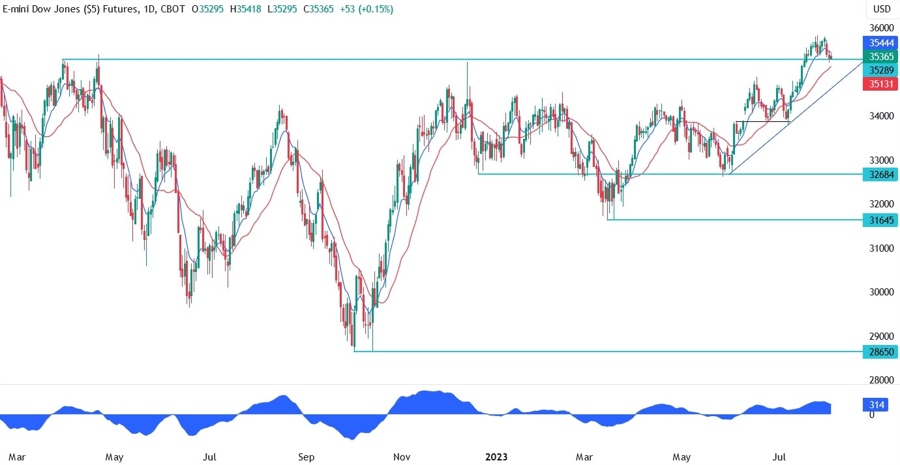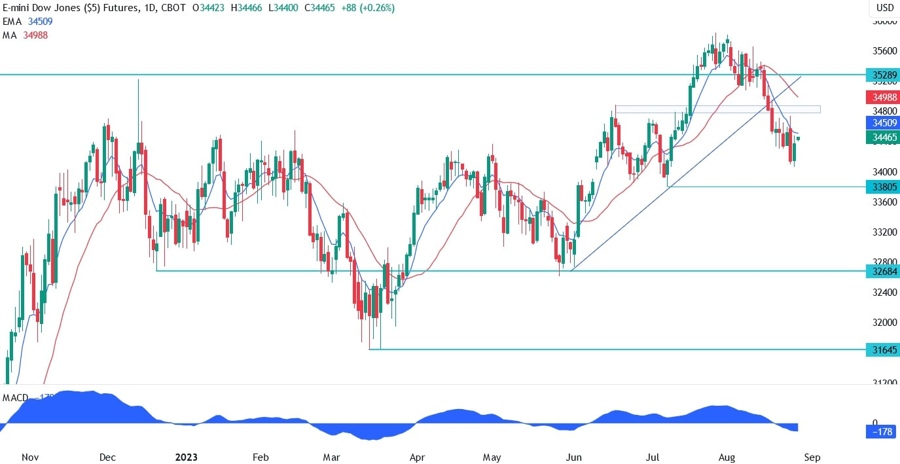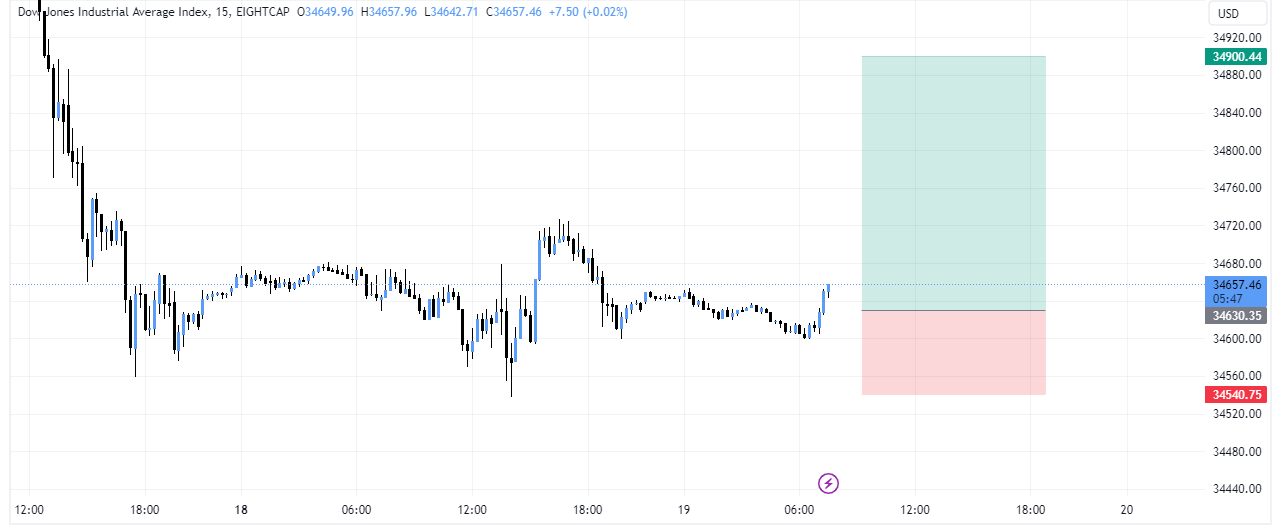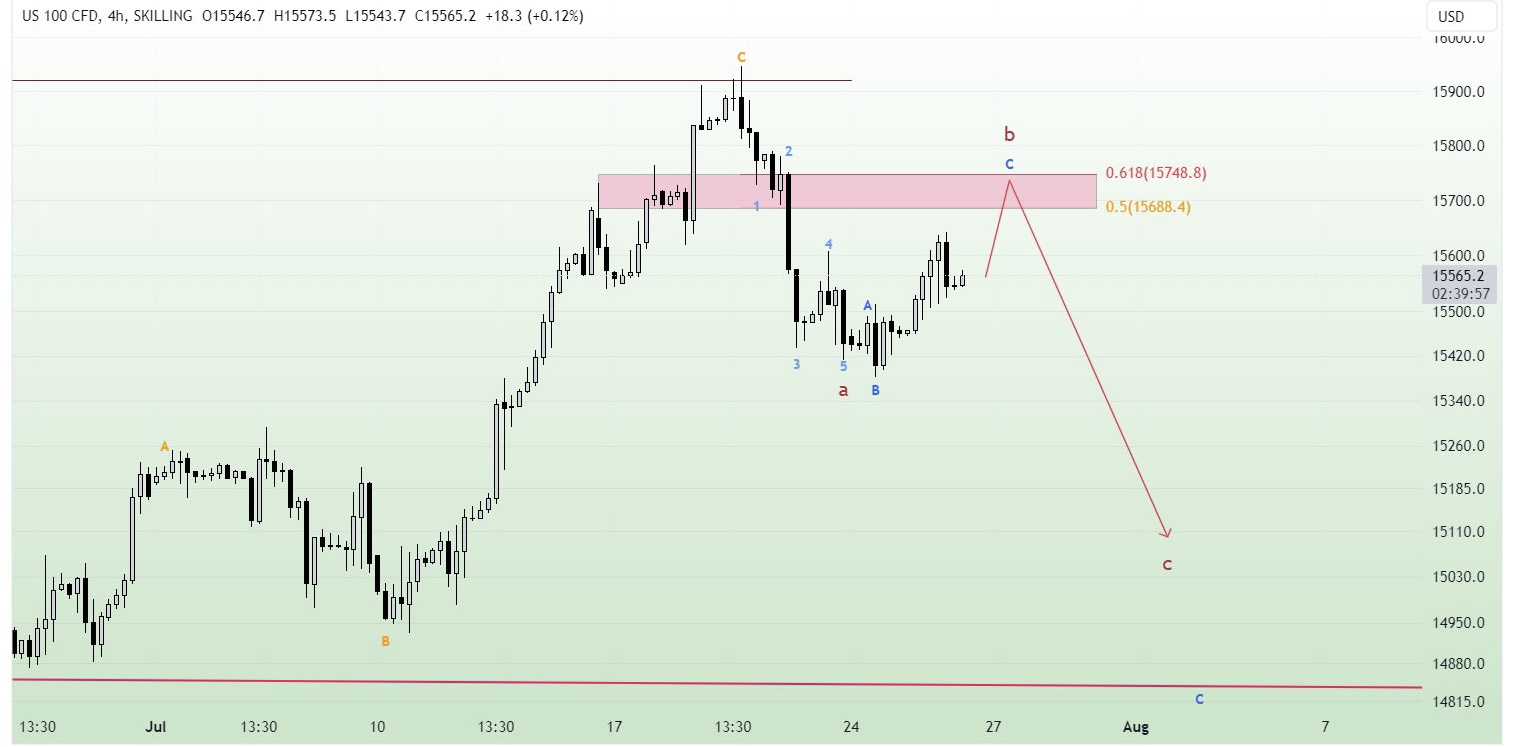S&P/NZX 50 Index
Parent Index
NA
Indices informations
Listed Exchanges
| NZX |
Related Instuments
| S&P/NZX 50 Index |
Sector Represented
| Airport Services |
| Airlines |
| Packaged Foods & Meats |
| Air Freight & Logistics |
| Diversified Banks |
Indices
- BSE SENSEX
- CAC 40
- CBOE NASDAQ-100 Volatility Index (VXN)
- CBOE Volatility Index (VIX)
- China50-FTSE China A50 Index
- DAX
- DAX PERFORMANCE-INDEX-GDAXI
- DE40-Germany 40 Index DAX
- Dollar Index USDX-DXY-DX-Dixie
- Dow Jones Industrial Average-DJIA
- EURO STOXX 50 SX5E
- FTSE 100 Index-UK100 Index
- Germany 30
- Hang Seng Index
- IBEX 35-Spain 35
- NASDAQ Composite
- NASDAQ-100
- Nikkei 225
- Russell 2000 Index
- S&P/ASX 200
- Singapore Blue Chip Index-STI
- Swiss Market Index (SMI) Switzerland Blue Chip Index
- TecDax Price Index
- TECHDE30-Germany Tech 30 Index
- US Tech 100 Index UT100
- US2000-US Small Cap 2000 Index
- US30-US Wall Street 30 Index
- US30M- US Wall Street 30 Index M
- US500-S&P 500 (GSPC, INX, SPX)
- US500-US SPX 500 Index
- US500M-S&P 500 Mini
- All Ordinaries
- Amsterdam Exchange Index AEX index
- ATX-Austrian Traded Index (ATX)
- BEL 20
- BELEX15
- BIRS
- BIST-Borsa Istanbul
- CROBEX
- EGX 30 Index Egypts Leading Stock Market Index
- FTSE All-Share Index
- FTSE Bursa Malaysia Index-KLCI Index
- FTSE MIB-FTSE MIB 40
- Índice Bursátil Caracas (IBC)
- Índice Bursátil de Capitalización-The General Index
- Indice de Precios y Cotizaciones
- KOSPI
- KSE 100 Index
- MDAX
- MERVAL
- MICEX-The MOEX Russia Index
- OBX Index
- OMX Copenhagen 20 (OMXC20)
- OMX Helsinki 25 (OMXH25)
- OMX Stockholm 30 (OMXS30)
- PSE Index (PSEi)
- PSI20-PSI-20
- S&P/NZX 50 Index
- S&P/TSX 60
- S&P/TSX Composite Index
- S&P/TSX Venture Composite Index
- SOFIX
- SSE Composite Index (上证综指) Shanghai Composite Index
- Straits Times Index (STI)
- SZSE Component Index (深证成指)
- TA-125 Tel Aviv 125 Index
- Taiwan Capitalization Weighted Stock Index (TAIEX)
- The Indice de Precio Selectivo de Acciones- IPC
- CBOE NASDAQ-100 BuyWrite Index (BXN)
- Hang Seng China H-Financials Index
- IBOVESPA-The Bovespa Index-Brazil Stock Exchange Index
- NASDAQ Financial-100
- SDAX – Small cap
- TecDAX
- aaa
- Amex Gold BUGS Index
- Amex Oil Index
- AScX index – Small cap
- ASE Weighted Index
- Athex 20
- Barrons 400 Index
- BELEXline
- BET-10
- BSE DCI
- BSE FCI
- BUMIX – Mid cap
- BUX – Large cap
- CA60-Canada 60 Index
- CAC All Share
- CAC All-Tradable
- CAC Large 60
- CAC Mid & Small
- CAC Mid 60
- CAC Next 20
- CAC Small
- Capital Markets Index
- CASPI
- CBOE DJIA BuyWrite Index (BXD)
- CBOE S&P 500 BuyWrite Index (BXM)
- CBV Index
- CBV Real Estate Index
- CECEEUR
- Central European Blue Chip Index – Regional large cap
- ChinaH-Hong Kong China H-shares Index
- COLCAP
- Colombo Stock Exchange Sector indices (CSE Sectors)
- CROBIS
- CSC X
- CSE 30
- CSE50
- CSI
- CSI 100 Index (中证100指数)
- CSI 300 Index (沪深300指数)
- Dow Jones Global Titans 50
- Dow Jones Transportation Average
- Dow Jones Utility Average
- DSE
- DSEX
- DSM200
- EGX 100 Index
- EGX 50 Index
- EGX 70 Index
- ERS10
- FIRS
- FT 30 Index
- FTSE 350 Index
- FTSE AIM All-Share Index
- FTSE AIM UK 50 Index
- FTSE All-World index series
- FTSE Fledgling Index
- FTSE Italia Mid Cap
- FTSE MID 250 Index
- FTSE SmallCap Index
- FTSE techMark Index
- FTSE/Athex Large Cap
- FTSE/JSE All Share Index
- FTSE/JSE Top 40 Index
- FTSEurofirst 300 Index
- FTSEurofirst Euro Supersector Indices
- GSE All-Share Index
- Hang Seng China Enterprises Index
- Hang Seng China-Affiliated Corporations Index
- HK50
- IDX Composite
- IGBC
- IPSA
- ISEQ 20-The Ireland Overall Stock Exchange Index-ISEQ20
- IT40-Italy 40 Index
- Jakarta Islamic Index (JII)
- Jamaica Stock Exchange (JSE)
- KASE
- KMI 30 Index
- KOSDAQ
- KSE All Share Index
- KSE-30 Index
- Kuala Lumpur Composite Index
- LASI
- LQ-45
- LuxX Index – Luxembourg Stock Exchange
- MADEX index
- Madrid Stock Exchange General Index
- MASI index
- MESDAQ
- MIDDE50-Germany Mid 50 Index
- MIDDE60-Germany Mid 60 Index
- Milanka Price Index (MPI)
- MSCI EAFE
- MSCI GCC
- MSCI Hong Kong Index
- MSCI World
- MSM-30
- NEPSE Index – Nepal Stock Exchange
- NETH25
- NIFTY 100 LOW VOLATILITY 30
- NIFTY 200
- NIFTY ALPHA 50
- NIFTY BANK
- NIFTY CPSE
- NIFTY ENERGY
- NIFTY FINANCE
- NIFTY FMCG
- NIFTY INDIA CONSUMPTION
- NIFTY INFRA
- NIFTY IT
- NIFTY MEDIA
- NIFTY METAL
- NIFTY MIDCAP 100
- NIFTY MIDCAP 50
- NIFTY MIDCAP LIQUID 15
- NIFTY MIDSMALLCAP 400
- NIFTY MNC
- NIFTY Next 50
- NIFTY PHARMA
- NIFTY PSE
- NIFTY PSU BANK
- NIFTY PVT BANK
- NIFTY REALTY
- NIFTY SERV SECTOR
- NIFTY SMALLCAP 100
- NIFTY SMALLCAP 250
- NIFTY SMALLCAP 50
- NIFTY100 EQUAL WEIGHT
- NIFTY100 LIQUID 15
- NIFTY200 QUALITY 30
- NIFTY50 EQUAL WEIGHT
- Nor25-Norway 25 Index
- NSE 30 Index
- NSE All Share Index
- NSE NIFTY 50
- NYSC Arca Major Market Index
- NYSE American Composite Index
- OMX Iceland 15 (discontinued)
- OMX Iceland 6
- OMX Stockholm PI (OMXSPI)
- OMX Vilnius (OMXV)
- OTCM QX ADR 30 Index
- Palisades Water Index (ZWI)
- PFTS index
- Philadelphia Gold and Silver Index
- PHLX Semiconductor Sector
- PSE All Shares Index
- PSE Financials Index
- PSE Mining and Oil Index
- PSI/GERAL
- PX Index
- RTS Index (RTSI)
- Russell 1000
- Russell 2500
- Russell 3000
- Russell MidCap
- Russell Small Cap Completeness
- S&P 100
- S&P 1500
- S&P Asia 50
- S&P BSE 500
- S&P Europe 350
- S&P Global 100
- S&P Global 1200
- S&P Latin America 40
- S&P MidCap 400
- S&P MidCap 400/BARRA Growth
- S&P MidCap 400/BARRA Value
- S&P SmallCap 600
- S&P SmallCap 600/BARRA Growth
- S&P SmallCap 600/BARRA Value
- S&P Vietnam 10 Index
- S&P/ASX 20
- S&P/ASX 300
- S&P/ASX 50
- SA40-South Africa 40 Index
- SBF 120
- SE30-Sweden 30 Index
- SET Index
- SET100 Index
- SET50 Index
- Slovak Share Index
- SMI Expanded
- SMI MID
- SPBLPGPT
- SSE 180 Index (上证180指数)
- SSE 50 Index (上证50指数)
- STOXX Europe 600
- SWI20-Switzerland 20 Index
- Swiss Leader Index (SLI)
- Swiss Performance Index (SPI)
- SZSE 100 Index (深证100指数)
- SZSE 200 Index (深证200指数)
- SZSE 300 Index (深证300指数)
- TA-35 Index
- TA-90
- Tadawul
- TEDPIX
- TEPIX
- The Global Dow
- The GSE Composite Index.
- THETAUSD Theta Network Token vs US Dollar
- TOPIX
- Trinidad and Tobago Stock Exchange (TTSE)
- UBS 100 Index
- Value Line Composite Index
- VN Index
- WIG-Warszawski Indeks Giełdowy
- WIG30
- Wilshire 4500
- Wilshire 5000
- Zimbabwe Industrial Index
- Zimbabwe Mining Index
The S&P/NZX 50 Index: New Zealand’s Premier Stock Market Benchmark
The S&P/NZX 50 Index, commonly referred to as the NZX 50, is New Zealand’s leading stock market index. It represents the performance of the top 50 companies listed on the New Zealand Exchange (NZX), which is the country’s primary stock exchange.
As an equity benchmark, the S&P/NZX 50 provides investors with a snapshot of the overall performance and direction of the New Zealand stock market. It serves as a reliable indicator of the health of the economy and investor sentiment in the country.
Composition and Calculation
The S&P/NZX 50 Index is composed of the 50 largest and most liquid stocks on the NZX, based on free-float market capitalization. This means that only shares available for trading in the open market are considered when determining a company’s weight within the index.
The index is reviewed on a quarterly basis, during which any changes in the constituent companies are made. The composition may change due to various factors, such as mergers, acquisitions, delistings, or changes in market capitalization ranking.
To calculate the index value, a modified market capitalization-weighted methodology is used. This means that larger companies have a greater impact on the index’s movement compared to smaller ones. The index is also influenced by changes in share prices, dividends, and corporate actions of its constituents.
Industry Representation
The S&P/NZX 50 Index offers broad exposure to various sectors of the New Zealand economy. It includes companies from industries such as finance, telecommunications, utilities, healthcare, consumer goods, and more.
This sector diversification helps in spreading investment risk and enables investors to get a comprehensive view of the overall performance of the New Zealand stock market.
Investing in the S&P/NZX 50 Index
Investors can gain exposure to the S&P/NZX 50 Index through a range of investment products, including index funds, exchange-traded funds (ETFs), and listed funds. These products aim to replicate the performance of the index, allowing investors to participate in the returns of the constituent stocks.
By investing in the NZX 50 Index, investors can diversify their portfolios and gain exposure to the growth potential of New Zealand’s leading companies. The index represents a mix of well-established firms and emerging companies, providing a balance between stability and growth opportunities.
Significance and Impact
The S&P/NZX 50 Index serves as a vital benchmark for the New Zealand financial market. It is widely used by market participants, including fund managers, analysts, and researchers, to assess the performance of the overall stock market or to compare the performance of individual investments against the index.
Furthermore, the index plays a crucial role in attracting both domestic and international investors, as it provides transparency, credibility, and ease of access to the New Zealand equity market.
Conclusion
The S&P/NZX 50 Index is an essential tool for investors seeking exposure to the New Zealand stock market. It offers a comprehensive snapshot of the market’s performance and provides a reliable indicator of the country’s economic health. With its diverse industry representation and broad composition, the NZX 50 serves as a valuable benchmark for investors and contributes significantly to the growth and development of the New Zealand financial market.
S&P/NZX 50 Index: Key Data Points
The S&P/NZX 50 Index is the main stock market index of New Zealand. It represents the performance of the top 50 companies listed on the New Zealand Stock Exchange (NZX), which are selected based on their market capitalization and liquidity. The index provides investors with a comprehensive snapshot of the New Zealand stock market.
1. Market Capitalization:
The S&P/NZX 50 Index reflects the combined market capitalization of the 50 largest publicly traded companies in New Zealand. Market capitalization is calculated by multiplying the total number of outstanding shares of each company by its current stock price. The larger the market capitalization, the greater the company’s weightage in the index.
2. Constituent Companies:
The index comprises a diversified range of companies from various sectors such as finance, telecommunications, utilities, healthcare, and more. Some of the well-known constituent companies include Auckland International Airport, Fisher & Paykel Healthcare, Meridian Energy, and Spark New Zealand.
3. Performance Measurement:
The S&P/NZX 50 Index serves as an important benchmark for measuring the performance of the New Zealand stock market. Investors and analysts often compare the returns of individual stocks, mutual funds, or portfolios against the performance of this index to evaluate how well they have performed in relation to the overall market.
4. Weighting Methodology:
The index uses a float-adjusted market capitalization weighting methodology, which means that the weight assigned to each constituent company is proportional to its free-float market capitalization. This methodology ensures that the index is reflective of the relative size and importance of each company within the market.
5. Rebalancing and Review:
The S&P/NZX 50 Index is reviewed quarterly to ensure that it remains representative of the New Zealand equity market. The index committee reviews the constituent companies’ eligibility criteria, market capitalizations, and liquidity to make necessary adjustments. Rebalancing helps in maintaining the accuracy and relevancy of the index.
6. Global Recognition:
The S&P/NZX 50 Index is widely recognized both domestically and globally as a key indicator of the New Zealand stock market’s health and performance. It provides international investors with an efficient way to gain exposure to the New Zealand market and track its overall performance.
7. Investment Opportunities:
The S&P/NZX 50 Index serves as a useful tool for investors looking to diversify their portfolios or capture the overall performance of the New Zealand stock market. Various financial products such as index funds, exchange-traded funds (ETFs), and derivatives are available that replicate the performance of the index, allowing investors to gain exposure to a diversified portfolio of top New Zealand companies.
In conclusion, the S&P/NZX 50 Index is a vital measure of the New Zealand stock market’s performance. It represents the largest and most actively traded companies in the country and serves as a benchmark for investors and fund managers. Understanding the key data points associated with this index can help investors make informed decisions and navigate the dynamic New Zealand equity market.
S&P/NZX 50 Index: The Top Companies Shaping New Zealand’s Economy
The S&P/NZX 50 Index is the premier benchmark for the New Zealand stock market, representing the performance of the top 50 companies listed on the New Zealand Exchange (NZX). This index serves as a key indicator of the country’s economic health and provides investors with valuable insights into the performance of New Zealand’s corporate sector.
So, which companies are included in the prestigious NZX 50? Let’s take a closer look at some of the prominent players shaping New Zealand’s economy:
1. Fisher & Paykel Healthcare Corporation Limited (FPH)
Fisher & Paykel Healthcare is a global leader in the design, manufacture, and marketing of medical devices and systems. With a strong focus on respiratory care and acute care products, FPH has established itself as a critical contributor to the healthcare industry, both within New Zealand and internationally.
2. Auckland International Airport Limited (AIA)
Auckland International Airport is New Zealand’s largest international gateway, connecting the country to the rest of the world. AIA plays a vital role in facilitating tourism, trade, and business activities, serving millions of passengers annually. As New Zealand’s main transportation hub, AIA contributes significantly to the nation’s economic growth.
3. Spark New Zealand Limited (SPK)
Spark New Zealand, formerly known as Telecom New Zealand, is the country’s leading telecommunications and digital services provider. With its comprehensive range of offerings, including mobile, internet, and IT solutions, Spark enables connectivity and empowers businesses, individuals, and communities across New Zealand.
4. Meridian Energy Limited (MEL)
Meridian Energy is New Zealand’s largest renewable electricity generator, harnessing the country’s abundant natural resources. As an industry leader in clean energy production, MEL plays a significant role in advancing sustainable practices and reducing New Zealand’s carbon footprint.
5. The a2 Milk Company Limited (ATM)
The a2 Milk Company has gained global recognition for its unique dairy products, which are free from the A1 protein found in traditional cow’s milk. ATM has experienced rapid growth in international markets, capitalizing on the increasing demand for healthier alternatives and catering to consumers with specific dietary needs.
6. Contact Energy Limited (CEN)
Contact Energy is one of New Zealand’s major electricity generators and retailers, supplying power to both residential and commercial customers. CEN actively contributes to the development of renewable energy infrastructure and implements innovative solutions to meet the nation’s growing energy demands sustainably.
7. Fletcher Building Limited (FBU)
Fletcher Building is New Zealand’s leading construction and building materials manufacturer. FBU operates across various sectors, including residential, commercial, and infrastructure, delivering essential projects that shape the physical landscape of the country.
8. Ryman Healthcare Limited (RYM)
Ryman Healthcare specializes in providing retirement living options and aged care services. RYM operates retirement villages and healthcare facilities throughout New Zealand, offering high-quality living arrangements and personalized care for seniors.
These are just a few examples of the diverse range of companies that constitute the S&P/NZX 50 Index. Each company brings its unique strengths and contributes to different sectors of New Zealand’s economy, collectively driving the country’s growth and prosperity.
Investors and market observers closely monitor the performance of the NZX 50 as a reflection of New Zealand’s business landscape. As these companies thrive, so does the nation.
Fundamental Summary
- Coming soon!!










